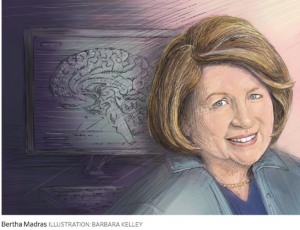This blog is not intended as a political commentary. But it is intended as a healthcare information site and one that will inform you on healthcare issues being debated by our politicians.
Now that it appears Vice President Kamala Harris is the intended nominee of the Democratic Party for President, her views on healthcare should be known. Harris is a supporter of Senator Bernie Sanders’ views on socialized medicine. When Sanders promoted changes in our healthcare system he called Medicare for All, Harris supported his bill in the Senate. She has called for the elimination of private health insurance in favor of a socialized system where government controls all healthcare. What would that mean?
When Senator Sanders promoted Medicare for All, in 2018, I wrote a two-part series on the subject. Since this subject is sure to be discussed in the election campaign soon, I am re-publishing that two-part series here:
Understanding Medicare For All – Part I
Robert S. Roberts, M.D.
9/10/18
It is the duty of every American voter to be educated on the issues. As we rapidly approach another election day in November, many Democratic candidates are touting “Medicare For All” as a solution to our failing healthcare system.
Vermont Senator and avowed socialist Bernie Sanders introduced his version of healthcare reform in 2016 when he campaigned for the presidency touting a new single-payer system he calls Medicare For All. Other Democratic candidates have jumped on Bernie’s bandwagon as a growing number of mostly young Americans favor socialism over capitalism.
Today I begin a series of posts to help readers understand what Medicare For All really means to the healthcare of Americans. To assist me in this analysis I will be relying on the excellent work of healthcare economist John C. Goodman.
Ten Things You Need to Know
Goodman gives us ten fundamentals you need to understand about Medicare and what it mean if it were the only healthcare system available to everyone, as Senator Sanders promotes.
- Medicare is not really government insurance.
Although Medicare is mostly funded by taxpayers, it is not strictly a government system. It was formed originally by providing a standard benefit package offered by Blue Cross in 1965. It has always been privately administered, mostly by Blue Cross, that continues to provide private insurance to non-seniors. In recent years, one third of all seniors are enrolled in plans offered by private insurers such as Cigna, Humana, and United Healthcare under a cooperative program called Medicare Advantage.
- The most successful part of Medicare is run by private insurance.
This refers to the above-mentioned Medicare Advantage program. Studies have found this program delivers higher quality care at less cost than traditional Medicare. (Choice of doctors, however, is more limited.)
- Medicare is often the last insurer to adopt innovations that work.
Medicare started prescription drug coverage only after all the private insurers had been doing that for years. It still doesn’t pay for doctor consultations by phone, email, or Skype. It won’t pay for house calls at night or on weekends, even though the cost and the wait times are far below those of emergency rooms.
- Medicare has wasted enormous sums on innovations that don’t work.
Medicare has spent billions on pilot programs and demonstration projects trying to find ways of lowering costs and raising the quality of care. Yet instead of finding places in the healthcare system where these techniques work (private Medicare Advantage plans), Medicare set out instead to reinvent the wheel. Medicare frequently has regulations that are counter-intuitive and wasteful, such as requiring patients to be hospitalized before they can receive home physical therapy.
- Most seniors in conventional Medicare are participating in stealth privatization, even though they are unaware of it.
There are over 32.7 million patients enrolled in a managed care program called Accountable Care Organizations (ACOs). The Obama administration started this practice without telling seniors they were participating in a grand experiment. Not only that, but it is illegal for an ACO to tell a senior they are enrolled! Furthermore, ACOs are not achieving their intended purpose – they are neither saving money nor are they improving the quality of care.
- There is nothing Medicare can do that employers and private insurers can’t do.
For many years the Physicians for a National Health Program argued that a single-payer health insurer would be a single buyer in the market for physicians’ services. They reasoned this would give the government the power to bargain down the fees paid to physicians. Reality, however, is that Medicare doesn’t bargain with anyone. They simply put out a price for services and doctors can either accept or reject it. Private insurers have been doing the same thing for years. This is currently bringing doctor fees down in the ObamaCare exchange market – which is why the best doctors and hospitals avoid these plans.
- Medicare For all would be costly.
There is no such thing as a free lunch. This is one of the first lessons of adulthood. Even Bernie Sanders admits this, but only when pressed. A study by Charles Blahous of the Mercatus Center has estimated the cost at $32.6 Trillion over the first ten years. This would necessitate a minimum of a 25% payroll tax – but only if it is assume doctors and hospitals provide the same amount of care they provide today. Since Medicare rates are 40% or more below private rates, a realistic assumption is that doctors and hospitals would increase the amount of care to make up the difference. This would then require at least a 30% payroll tax.
(This post will be continued next time.)



